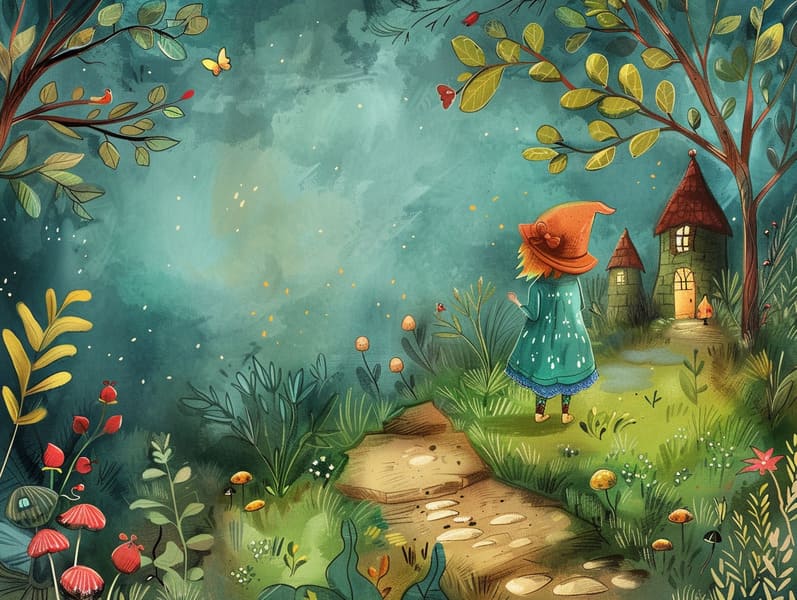The Emergence of Legendary Fairy Tales with Its Undying Fascination.
The Emergence of Legendary Fairy Tales with Its Undying Fascination.
Blog Article

Popular fairy tales have old origins. These stories have been shared from one generation to the next centuries before they were ever published. They developed from a variety of societies, including European traditions. They were initially narrated among grown-ups, often carrying themes and messages mirroring the societal norms and beliefs of the time.
The renowned Brothers Grimm, the two Grimm brothers, were among the first to collect and release many of these beloved fairy tales. Their anthology, "Grimm's Folk Tales," included stories like "The True Bride," "Hansel and Grethel," and "Snow-White and Rose-Red," which have since become cornerstones in the world of famous fairy tales. Similarly, Hans Andersen's fantastical fairy tales, such as "The Sea Maid," and "The Duckling's Story," have enchanted hearts worldwide, guaranteeing their place in the pantheon of classic fairy tales.
Though they are old, fairy tales remain as relevant as ever, especially as children's bedtime stories. These whimsical stories are now available in different formats, including richly illustrated books, captivating animations, and internet fairy tales.
Their persistent charm can be credited to several captivating elements:
Important Morals: Old fairy tales often impart important moral lessons. Fairy tales like "The Tale of the Boy Who Cried Wolf" teach the significance of truthfulness, while "The Tale of the Tortoise and the Hare" demonstrate the virtues of persistence and unassuming nature. These stories offer young readers clear distinctions between moral and immoral, developing their moral compass in a kind yet important way.
Empathy and Understanding: Traditional fairy tales frequently depict heroes facing tests and troubles, provoking children to identify with their struggles and encourage their triumphs. For instance, "Beauty and the Beast" conveys the value of seeing inner beauty to recognize the true essence of a being, cultivating sympathy and awareness.
Cultural Insights: Many fairy tales are deeply ingrained in the cultural contexts from which they arose. Delving into these tales can provide intriguing perspectives into different beliefs, developing a sense of cultural understanding and perception.
Imagination and Creativity: The mythical elements in classic fairy tales—magical kingdoms—fire up children’s fantasies. These narratives carry readers to fantasy realms, motivating innovative dreams and a sense of amazement that endures a lifetime.
Timeless fairy tales are not only delightful but also illuminating. They act as whimsical tools in nurturing various mental and emotional abilities in little ones. When old fairy tales are recited, they nurture speech development website by teaching new language items and sophisticated sentence structures. This practice also fosters hearing perception and focus, as children remain attentive, looking forward to see what happens next.
Furthermore, deliberating the themes and characters of traditional fairy tales can develop cognitive skills and reasoning skills. Young ones are instructed to discover patterns, forecast, and make sense of cause and effect. These contemplations also encourage little ones convey their thoughts and feelings, enhancing their emotional intelligence.
In today’s digital age, the proliferation of digital storybooks has made these narratives more acquirable than ever. Web-based platforms and applications supply broad selections of traditional fairy tales that can be browsed or listened via anytime, anywhere. Fairy tales spoken are particularly in demand, supplying an fun way for the young to savor these delightful tales. Narrated books and read-to-me stories bring characters and settings to life, often enhanced by fantastical harmonies and songs that improve the storytelling experience.
The timeless allure of classic fairy tales lies in their ability to evolve to modern days while holding onto their fundamental ideas. Contemporary takes of these stories often show more multicultural characters and modern settings, making them familiar to today’s audience. However, the main ideas of gallantry, understanding, and even-handedness remain unchanged, continuing to connect with children of all ages.
Traditional fairy tales also offer a sense of contentment and homeliness. They share a organized narrative with a evident beginning, middle, and end, often drawing to a close with the finalization of conflicts and the triumph of right over wrong. This certainty can be placating for young ones, yielding a sense of steadfastness in an fluctuating world.
Ancient fairy tales continue to bewitch and train new generations, maintaining their mystique and applicability in modern society. As children's night stories, they make accessible a perfect blend of enchantment and education, fostering moral values, empathy, and creativity. The proliferation of internet fairy tales and the sought after status of fairy tales told out loud guarantee that these traditional narratives remain available to new generations.
By guarding and conveying these narratives, we continue to glorify the rich tapestry of fantasy and cultural heritage. Whether you are exploring a vividly illustrated book, enjoying a online library, or hearing an audiobook, the wonder of bedtime fairy tales is always within reach. These fairy tales convey of the persistent strength of tales and its ability to bond us across eras and regions.
Whether you are delving into a gorgeously illustrated book, delving into a digital library, or playing an read-aloud story, the mystique of traditional fairy tales is always within reach.
These tales highlight of the invariable impact of stories and its ability to hold us together across eras and regions, casting a charm that captivates and teaches alike.